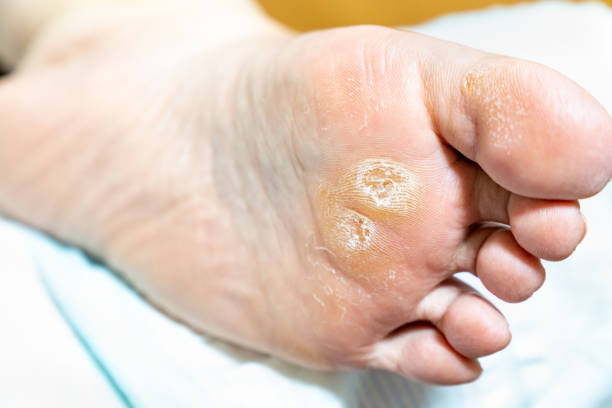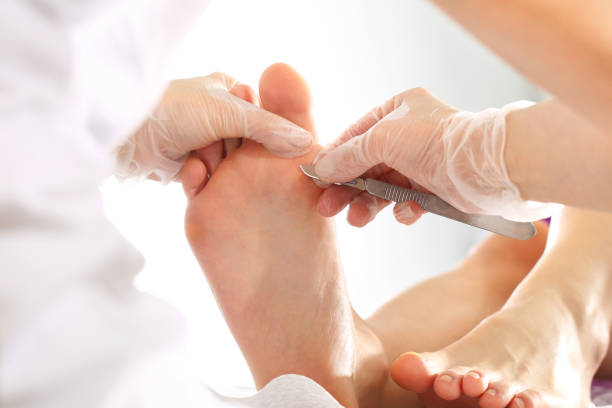How To Prevent Calluses On Feet? (6 Effective Tips)

A callus is a patch of skin that has hardened and thickened as a result of pressure, friction, or irritation. Calluses commonly develop on the feet of people, but they can also develop on the hands, elbows, or knees. Calluses have a lumpy texture to the touch, but because the skin is thicker there, it’s possible that they are less sensitive than the skin nearby. The body uses the thickening of the skin as a defense against friction at pressure points. In an attempt to shield an undersurface area from this, the skin develops calluses. They can irritate, but they are not harmful.
On your feet, calluses commonly develop over the bony region just beneath the toes that bear your weight when you walk. People who stand for long periods of time each day, have sweaty feet, and wear uncomfortable shoes are more likely to experience them. Here are some suggestions for keeping calluses off your feet.
Table of Contents
6 Effective Tips to Prevent Calluses on Feet
Trim Your Nails Correctly
Unnatural foot positions caused by excessively long toenails can increase the friction that leads to the development of corns and calluses. Cut your toenails short and straight across to keep them well-groomed. Neither taper the sides nor use a curved nail clipper. Additionally, straightening them out lowers your risk of getting an ingrown nail.
Support Your Feet With the Right Shoes
Corns and calluses are the results of friction, which is brought on by wearing tight shoes that squeeze your toes together. Choose designs that allow plenty of room for your toes to move. Try wiggling your toes the next time you put on your go-to pair of shoes. If you are unable to, your shoes’ toe boxes are likely too small.
Custom orthotics might also be advantageous to you. In order to lessen the risk of injury, orthotics are shoe inserts that support your arches and keep your feet in good alignment. Both sports shoes and everyday shoes with removable orthotics can be fitted for by us.
Never Forget Your Socks
In terms of maintaining good foot health, the humble sock has a significant impact. To protect your feet from areas that can easily rub against your shoes, such as the tops of your toes, thick, breathable socks reduce friction.
As much as you can, try to protect your feet by wearing shoes and socks. The skin on the bottom of your feet thickens naturally to protect itself when you spend a lot of time barefoot, and then you develop a callus.
Pad Yourself
Your feet may start to rub against certain parts of your shoes. Protect those areas with bandages, lamb’s wool, or non-medicated corn pads to prevent the development of a corn or callus. You can wear these protective coverings on the ground, between your toes, or on the soles of your feet.
Pay Attention to Other Foot Problems
You run a greater risk of getting corns and calluses if you have other foot issues like bunions, hammertoes, and bone spurs. These abnormalities can increase friction on your feet, which makes the skin develop a callus or corn as a form of self-defense.
General Foot Care
Regularly moisturizing your feet will help keep the roughened skin from becoming thicker. Don’t forget to regularly use a pumice stone to exfoliate your feet. Says our podiatrist Russel, “In comparison to the skin on your ears or back, the skin under and around your feet is very thick. As a minimum, the cream you use should contain 15–25% urea. Due to its keratolytic properties, the organic crystalline compound urea has the ability to both hydrate and gently exfoliate the skin.”

When Calluses Go Untreated
Please visit your podiatrist as soon as possible if you feel that your calluses are abnormal or if they are coupled with any other symptoms like those in the list below.
• Swelling
• Discomfort or pain when walking or standing
• Fever
• Splitting of the skin
• Pain
• Tenderness
• Discoloration
• Pus or fluid
What Are the Treatment Options for Calluses?
A callus might not need to be treated if it isn’t bothering you. But it’s wise to determine and address the callus’s underlying cause. Change your footwear, for instance, if tight shoes are to blame.
If you have a callus that hurts or causes discomfort, or if it injures, you might require additional care. You should get treatment for corns and calluses if you have diabetes or any other conditions that increase your risk of infections.
Your physician will examine your feet to look for calluses. They might apply pressure to various locations to gauge sensitivity. They might also ask you to cross the room so they can examine your gait.
They will likely ask you about your lifestyle habits, including:
• your footcare routine
• your typical choice of footwear
• how much walking and standing you do
• whether you’ve participated in any sports or physically demanding activities recently
There are several treatments available for calluses. The recommended course of action from your doctor will be based on both your symptoms and the root of your calluses.
They might suggest a podiatrist or orthopedic surgeon for treatment in some circumstances.
Summary
You might be able to prevent calluses by switching up your shoes and using over-the-counter remedies.
Inform your doctor if you have calluses if they hurt, inflame, or don’t go away with home remedies. If you develop calluses, have diabetes, or have any other illnesses that put you at risk for infections, you should also let your doctor know.
In some circumstances, your doctor might suggest that you seek treatment from a specialist.
